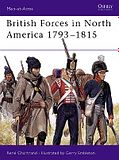
Having spent a day locked in mortal battle with mortgage providers and their eternal engines of lies - I think I can see the light at the end of the tunnel. There is every possibility that Mrs. Kinch and I will be getting keys to our new home next week. I'm not putting much store by that prediction, but we shall see.
In the meantime, I have been spending time waiting in offices waiting to see people, which has meant I've been able to spend some quality time with Louis Nolan.
He continues in much the way I expected, the British cavalry are too laden down with equipment to be really effective and everything much be done to reduce the amount of weight carried by cavalrymen. I was particularly amused by his plan to transfer older and -ahem- heftier troopers into the infantry once they reached the age of 35.
Nolan also maintains that the troop rather than the squadron was the proper unit of maneuvre, but that certainly no unit larger than a squadron should be deployed in line. Because cavalry is more reliant on speed than weight or numbers, the smaller, handier unit can exploit opportunities that would pass larger units by.
Another point that Nolan is enthusiastic about is the need for appropriate intervals between troops. His point was that without proper intervals it is almost impossible for disordered cavalry to reform without crashing into their fellows and disrupting the order of the whole line. It also compromises the speed of manuevre. He claims that the search for the "press of cloth" has led to large units closing up too enthusiastically in the charge with the result that the inner files become compacted and lose their order.
The preferred method of attack should be echelon allowing the sub-units to maneuvre to best effect and allowing sufficient space, should the attack fail, for the sub-units to retreat in good order. One point that I had never considered was that he condemned the issuing of homogeneous uniforms to cavalry, arguing that cavalry regiments should be dressed distinctively so as to make it easier to rally them on the field.
Lieut. Gen. Sir Charles James Napier also sticks his oar in, in excerpts from his Defects, Civil and Military, of the Indian Government, in which he deplores the effects of westernising Indian irregular cavalry, who he states are far superior horsemen when left to their own devices. He also picks up Nolan's (though perhaps Nolan took it up from him) point about weighing down horses with equipage.
What does all of this have to do with wargaming?
Well, that depends on - the skirmish wargamer will find a great deal of material here, seeing as there is a wealth of minutia offered. The wargamer on a broader canvas will still find much food for thought, though in more general terms. A great deal of ink is expended discussing how cavalry ought to be used on the battlefield and assuming ones rules are good ones, a good player may find himself evaluating his decisions rather than his rules after reading this book.
Still recommended. I may have to look over the Command & Colours rules and see what can be made of them in the light of Nolan.
The image above is taken from Iron Maiden's "The Trooper", a good pounding metal tune. It was inspired by the charge in which Nolan lost his life. I've often felt to be a little too wordy to be a really brilliant, but this is not the first time that charge has been leveled against Maiden, you can have a listen here.







































No comments:
Post a Comment